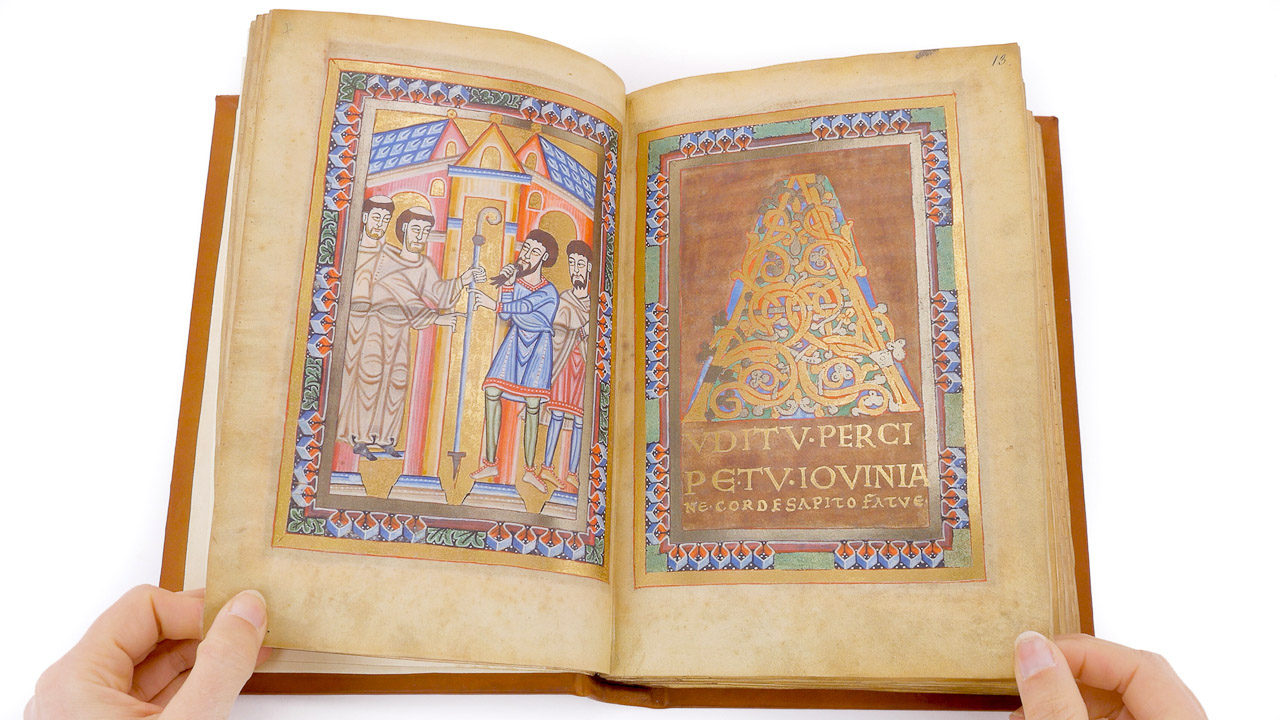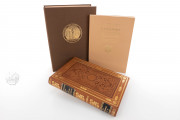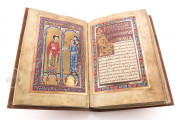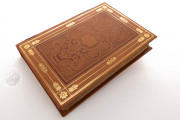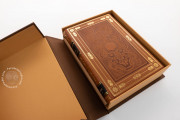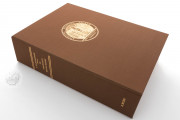Produced at the Benedictine monastery of Saints Peter and Paul at Cluny during its artistic golden age, the Parma Ildefonsus is an outstanding example of Romanesque book art. Lavishly decorated with twenty-five miniatures, ten portrait busts, and nine large painted initials and enhanced with gold, silver, and purple throughout, the codex was sent as a gift to Spain. Remarkably well-preserved, the Ildefonsus is a rare witness to manuscript art at one of Western Europe's most influential monastic centers.
The manuscript's main text is the De virginitate beatae Mariae, a treatise on the virginity of Mary written by Saint Ildefonsus (d. 667). Also included are two biographies of Saint Ildefonsus, one composed by Julian and another by Cixila, and a colophon copied from an earlier manuscript by the scribe Gómez for Godescalc, Bishop of Le Puy-en-Velay.
A Jewel of Romanesque Illumination
The decorative program of the Parma Ildefonsus includes three full-page author portraits opening the texts of, respectively, Julian, Ildefonsus, and Gómez (fols. 1v, 4v, and 102v), and six more full-page depictions of Ildefonsus. Other illustrations include sixteen smaller miniatures (including two of Ildefonsus), portrait busts of Old Testament prophets and patriarchs, and several interlace initials.
Two Artists Reflecting Different Traditions
Each text page of the manuscript has an elaborate painted frame—many feature foliate or geometric motifs between gold, silver, and purple bands. Most of the illustrations were executed by an artist, dubbed the Ildefonsus Painter, whose work has been identified in a fragmentarily preserved gradual from Cluny (Paris, Bibliothèque nationale de France, MS lat. 1087). His bold style reflects the heritage of Ottonian manuscript painting.
A second artist, the Colophon Painter, responsible for the last two miniatures (fols. 102r-v), worked in a style that betrays his training in or near Rome. He also illuminated a lectionary from Cluny (Paris, Bibliothèque nationale de France, MS nouv. acq. lat. 2246).
Made by Monastic Hands
A single scribe copied the main text in a balanced Caroline Minuscule with few ligatures. He was an active member of the Cluny scriptorium and contributed to a surviving manuscript recording the monastery's history (Paris, Bibliothèque nationale de France, MSS nouv. acq. lat. 1497-1498) and the lectionary with miniatures by the Colophon Painter.
Writing Rustic Capitals, a second scribe is responsible for the rubrics and inscriptions. Eight large foliate initials in gold and silver and one historiated initial, together with opening words written in gold majuscules, introduce the major divisions of the text.
A Luxurious Gift
The Parma Ildefonsus, small enough to fit comfortably in the hands, is a personal book intended as a gift to a high-ranking individual. This recipient may have been Bernard of Sédirac (d. 1125), a Spanish Cluniac abbot and Archbishop of Toledo. The manuscript was in Spain by 1200, when it served as a model for a copy known to have been at Toledo cathedral in the fourteenth century (Madrid, Biblioteca Nacional de España, MS 10087).
The Parma manuscript was sold by Matteo Luigi Canonici (1727–1805) to Paolo Maria Piciaudi, the first librarian of the Biblioteca Palatina, in 1765, and has remained in Parma since.
We have 1 facsimile edition of the manuscript "Parma Ildefonsus": Ildefonso Da Toledo. De Virginitate Beatae Mariae facsimile edition, published by Il Bulino, edizioni d'arte, 2010
Request Info / Price
